Photos by Lloyd Horgan
“I was in the fire brigade and I had a mortgage that I couldn’t possibly pay, for an aircraft that I couldn’t yet fly,” laughed Robert Hields in his office in Yorkshire, England. “I didn’t have a choice, I had to make it work.”
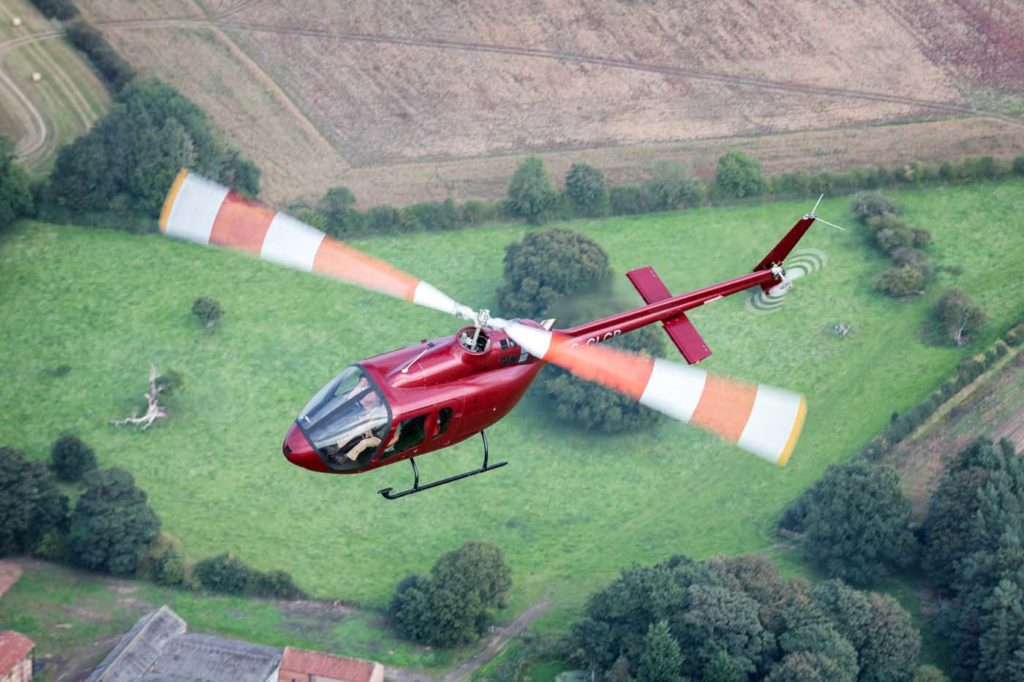
To say that the start of Hields’ flying career was unconventional is an understatement. Having taken an apprenticeship in mechanical engineering straight out of school in the 1960s, by 1974 he was working as a firefighter in the city of Leeds. Flying was the last thing on his mind.
“My move into aviation was borne out of a frustration of not getting on in my chosen profession,” he said, explaining that by the mid-1980s, the downsizing of the fire brigade had seriously reduced his career options. “I even signed up for a physics degree with the idea that I might become a teacher.” But while out shopping for textbooks, Hields saw his first helicopter, a Bell 206 JetRanger. “I was fascinated,” he said. “I must have watched it for 10 minutes just hovering. I decided then and there to investigate becoming a pilot.”
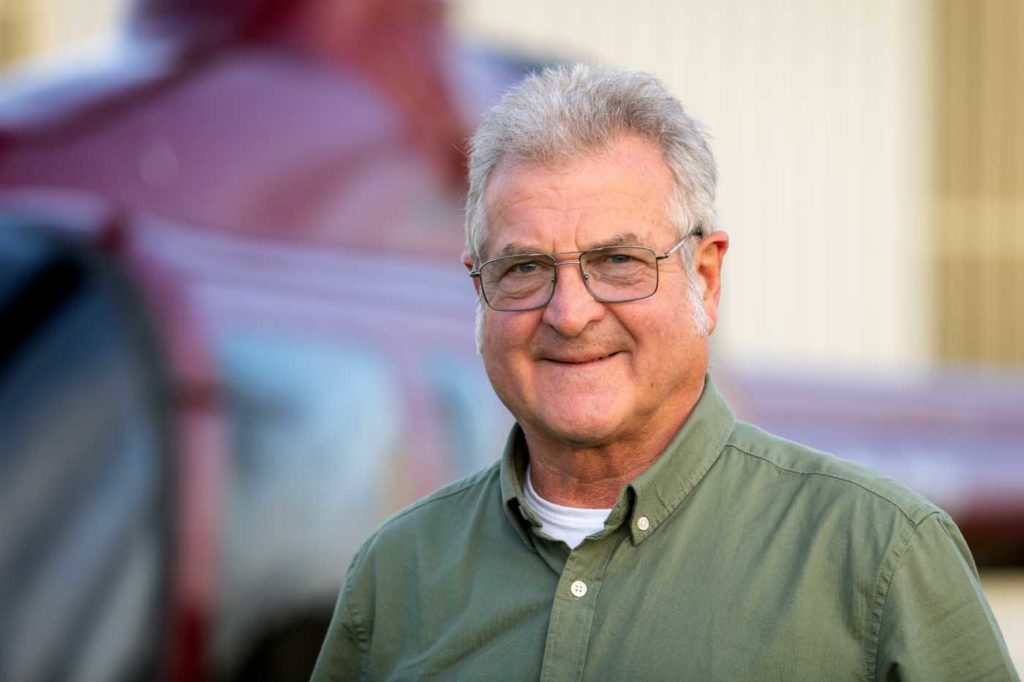
At that time, Bristow Helicopters was the best-known employer of helicopter pilots in the country, but applicants needed a degree or a fixed-wing private pilot license (PPL). Hields had neither, and to him it appeared that the industry was dominated by ex-military pilots — the only people able to build the 1,000 hours required to earn a commercial license. He sought advice from a colleague who had served in the Royal Air Force, only to be told he was “wasting his time.”
“That was all the encouragement I needed,” Hields said. “I’ll not be told I can’t do something.”
Reaching further afield for inspiration and advice, Hields wrote to Frank Robinson in 1988 with an enquiry about the R22, which at that time was relatively newly certified. Robinson wrote back personally with details about the aircraft and a price, and Hields went to work with his calculator.
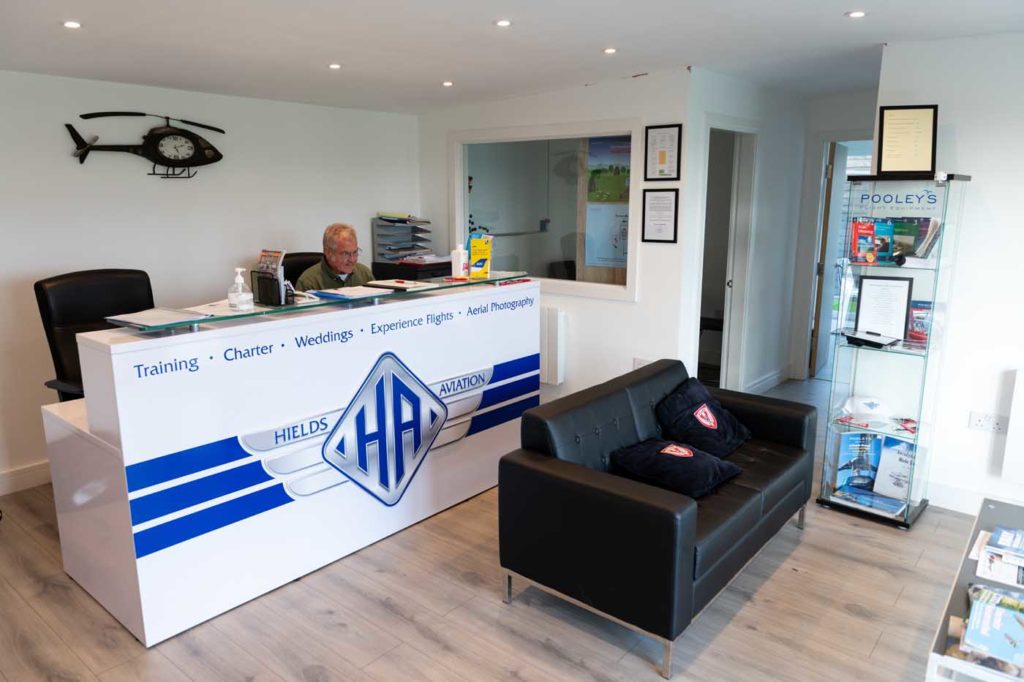
Private helicopters were still a relative rarity in the U.K. Training was hard to come by and expensive. “I figured out the cheapest way to do it was to buy an R22, and learn on that while I leased it out,” explained Hields. “I decided to re-mortgage my house and get a loan on the strength of the equity.”
Baptism of fire
Extracting that equity from his property proved harder than anticipated, as the financiers of Leeds were unfamiliar with helicopter ownership and even less optimistic about the business plan. By his third attempt to secure financing, Hields figured out that he was going to have to be less forthcoming about his position in the existing helicopter market. By the time he had a check in his hands, his own bank manager was resorting to subterfuge to avoid meeting with him.

“As soon as he saw me in line, he put his hat and coat on and shot out through a door,” said Hields. “He didn’t know I’d done a fire survey on the building the year before, and I knew he was actually hiding in a storeroom!”
Shortly after that meeting, Hields placed his order for a brand new R22, and his journey into professional aviation began in earnest.
“I leased the helicopter to an instructor with his own business,” he explained. “Eventually I had the 500 hours I needed to take the test to become an instructor myself.”
Hields initially saw the instructor rating as just a means to an end. Still working with the fire brigade, he needed a way to reduce the cost of the remaining 500 hours required at the time for a commercial license. “I wanted to go back into the emergency services and become an air ambulance pilot,” he said.
His examiner had other ideas, and convinced Hields to think about instruction in more professional terms. “He told me that people who can teach well are few and far between,” remembered Hields. “So I thought, I’ll give it a go.”

Hields opened his own operation at Sherburn in Elmet, a small airfield on the outskirts of Leeds with three grass runways and one of tarmac. Set in patchwork farmland, the beautiful rolling uplands of the wolds, dales, moors and vales of Yorkshire are within easy reach, even at the modest pace offered by an R22. Business soon took off, and within a year, Hields had to leave the fire brigade and give all his time to flight instruction.
“I was flat out,” he said. “My first student recommended me to another, and then two more came in; it was all word of mouth.”
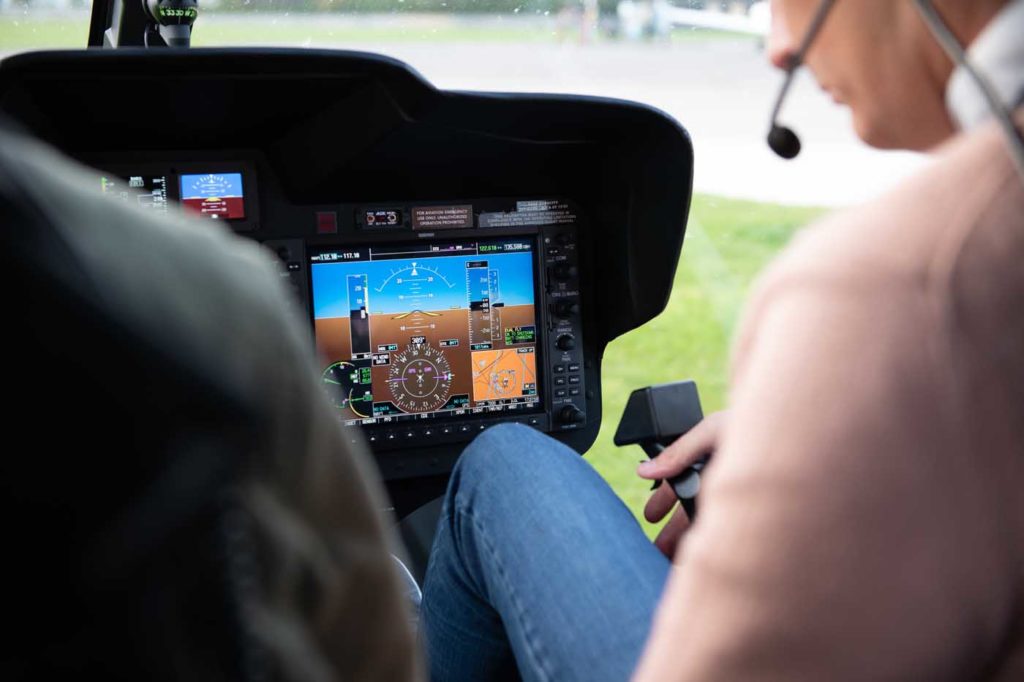
The business grew so fast that by the end of the year, Hields needed to employ a second instructor. Another R22 followed, before he transitioned into his first turbine in the early ’90s: a Bell 206A JetRanger.
Serious business
In 1992, Hields arranged the joint purchase of another Bell 206B-3 JetRanger with a former student, an arrangement which led the pair to receive an Air Operator Certificate (AOC) to service a Yorkshire Electricity Board contract for powerline inspection.
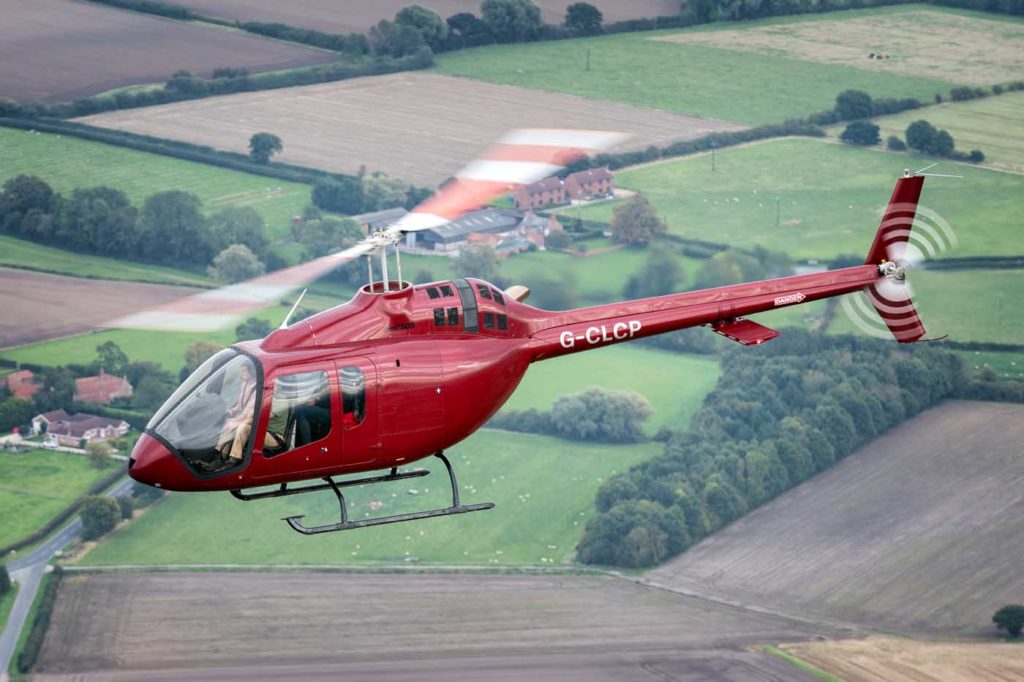
This diversity presented an opportunity as the world plunged into recession in 1992. Hields acquired another JetRanger from a company that had gone bust, and started a separate charter operation. While this was profitable work, Hields was always looking for opportunities to train and develop his pilots.
“We would do pleasure flights at big events, and I would tell my pilots that they would be trusted with the lives of the families and children of people they had never met,” he said. “I wanted them to take that seriously, and always be looking to improve. Every trip should be tidier than the last. You’d see a few pilots who would seem to think it was a bit of a wheeze, getting paid to go flying — but it’s a serious business, and nobody knows it all. If I caught anybody hot-dogging or showing off, they’d get a piece of my mind.”
These experiences still influence the approach to training at Hields Aviation today. Students who aspire to hold commercial licenses are coached on professional standards from their very first steps, and their hour building is supervised to maximize training opportunities and prepare them for entry into the industry.
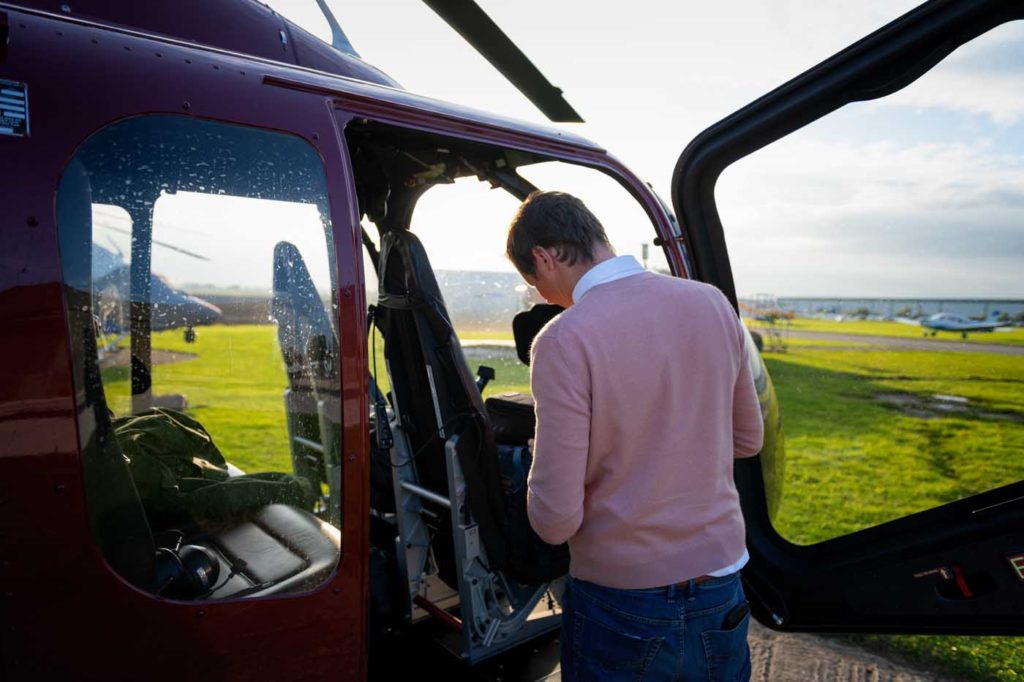
By the mid ’90s, the size of the operation and its location started to attract interest from the British domestic TV industry. Many British TV soap operas and drama shows were filmed in the area by regional production companies and broadcast nationwide.
“The first filming job I did was for Yorkshire Television,” remembered Hields. “They wanted a military-looking helicopter, so I got my hands on a [Westland AS341] Gazelle and hired an ex-Army pilot to fly it.”
Aerial filming work with several British productions soon followed, a number of which were filmed either in or near Yorkshire.
During this period, Hields developed an interest in historic helicopters. In 1992, he rebuilt a Bell 47 and then restored another, both of which he displayed at airshows across the U.K. He felt that the lack of an automatic engine governor and resultant need for the pilot to manually control the throttle, added to the aircraft’s appeal.
“I’m a massive Bell 47 enthusiast; Bell got a lot of things right, even in the early days,” said Hields. “Everybody should learn to fly a Bell 47 because it teaches you about exactly what you’re doing with the aircraft. It gives you confidence.”
In 1999, Hields added to his historic fleet with an iconic Hiller UH-12E4 (James Bond fans would recognize it as the very same airframe that appeared in Goldfinger). After its restoration courtesy of Hields, it relived its former glory when he flew it in the spy thriller The Man from U.N.C.L.E., although narrowly avoiding catastrophe in the process. Hields had to fly the machine to an engine-off landing in a small garden in Italy after packing foam fitted in transit escaped from under an inspection panel and went into the tail rotor.
Back home, the training operation grew throughout the ’90s and the first decade of the new century. By 2007, Hields had established training centers at four different sites around the north of the United Kingdom, operating a fleet of 16 aircraft that were collectively flying over 3,000 hours per year.
“Of course, when the big recession came, it hit me very hard,” he explained. “We survived by selling most of the aircraft. I got rid of the R22s, the Schweizer [S300] and the Bell 47s. We went down to two R44s and I leased a JetRanger and a [Bell 206L] LongRanger as I needed them.”
The Robinson aircraft were retained at the original site at Sherburn, where they remain today. Having been bitten by the historic aircraft bug, Hields has since bought another Bell 47. The business found its feet again, and in 2018, Hields opened a fixed-wing flying school at Leeds Bradford Airport.
As demand for turbine training came back, Hields brought the fleet right up to date with a Bell 505 Jet Ranger X.
“It’s a terrific machine,” said Hields. “It’s got a well-understood transmission, a FADEC [Full Authority Digital Engine Control] that protects the pilot, and a great view out of the cockpit.”
The return to the company’s JetRanger roots was not coincidental.
“I’m a big fan of Bell helicopters; I don’t think there’s ever been a period when I haven’t had a Bell since my first JetRanger,” said Hields. “They’ve got a fantastic team, whether it’s sales or engineers, and they’ll bend over backwards to help you. It’s a super company with a great ethic. Almost like a family.”
Home safe
It would be easy to assume after a career that has featured a lot of hard work, a little glamor, and plenty of excitement (both planned and unforeseen), that Hields would be happy to rest on his laurels. But he isn’t ready to hand over the reins just yet.

“The best thing about teaching people is that you never know who’s going to come through the door. You meet such interesting people and if you do the job right, they appreciate it,” he said. “The school has completed over 35,000 hours and I’ve trained countless pilots that have gone on to have very successful careers in the industry, but it’s never been easy. I’m not going to give that up on a whim.”
Having begun with a firefighter’s salary and a debt that would have terrified most people, Hields Aviation has survived three financial crises and two global downturns in the aviation industry. It is probably no coincidence that he sees a sensible approach to risk as one of the most important aspects of teaching a new helicopter pilot.
“Safe flying starts the moment you open your eyes in the morning, not when you get to the school, or climb into the helicopter,” he said. “When you’re teaching new pilots, they’re trusting you with their life for every hour they will fly. You never stop learning.”
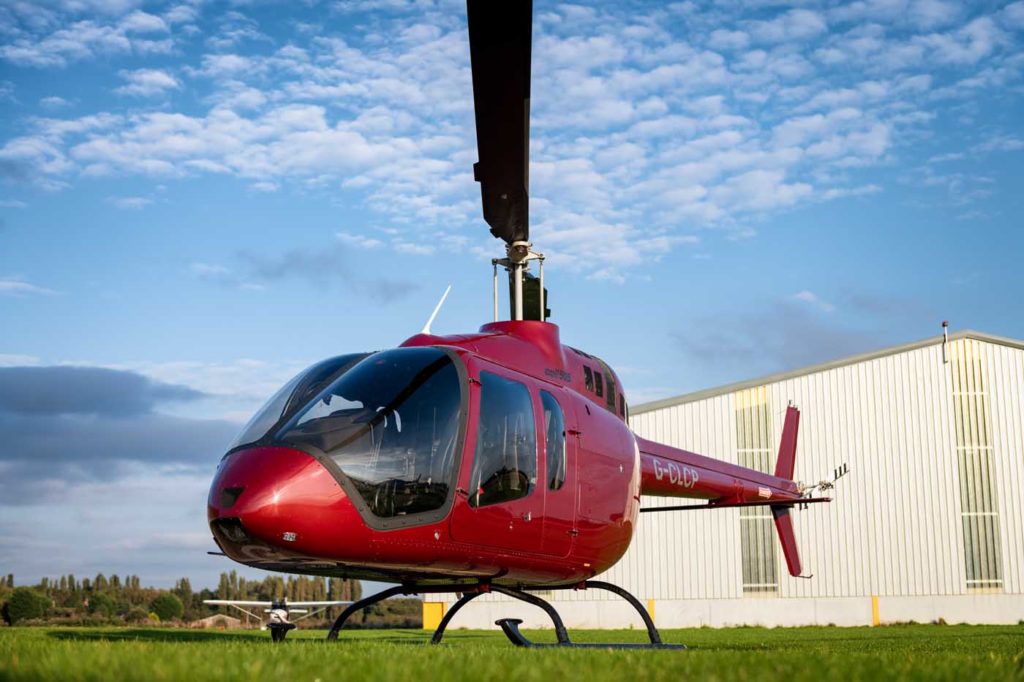
There’s no question that he enjoyed flying his beloved white Hiller over the glittering turquoise Mediterranean in front of the film cameras, but true job satisfaction for Robert Hields hasn’t come from rubbing shoulders with movie stars or appearing in the closing credits. It is more likely to be found in a little office at a quiet airfield nestled in the rolling Yorkshire countryside.
“There’s nothing I like more than watching a helicopter make a really neat approach, and a beautiful smooth landing,” he said. “And when the pilot gets out, it is somebody I trained.”





